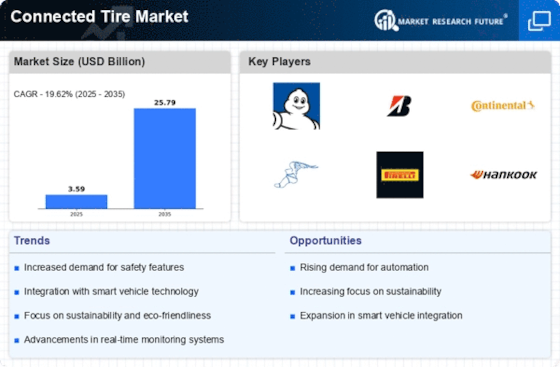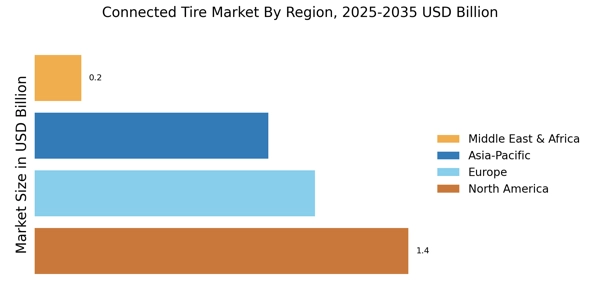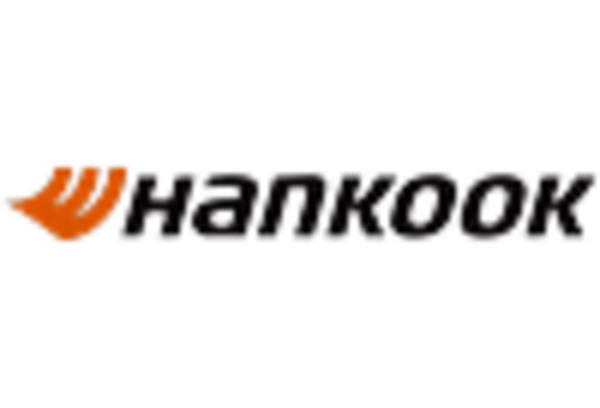Technological Integration in Vehicles
The integration of advanced technologies in vehicles is a primary driver for the Connected Tire Market. As automotive manufacturers increasingly adopt smart technologies, the demand for connected tires that can communicate with vehicle systems is rising. These tires provide real-time data on tire pressure, temperature, and wear, enhancing vehicle safety and performance. According to recent estimates, the market for connected vehicle technologies is projected to reach substantial figures by 2026, indicating a robust growth trajectory. This trend suggests that as vehicles become more interconnected, the need for compatible tire solutions will likely increase, thereby propelling the Connected Tire Market forward.
Fleet Management and Operational Efficiency
The rise of fleet management solutions is a crucial driver for the Connected Tire Market. Companies managing large fleets are increasingly adopting connected tire technologies to enhance operational efficiency. These technologies enable real-time monitoring of tire conditions, leading to improved maintenance schedules and reduced downtime. Market analysis suggests that the fleet management sector is experiencing significant growth, with many companies investing in telematics and connected solutions. This trend indicates that as businesses seek to optimize their operations, the demand for connected tires will likely increase, further propelling the Connected Tire Market.
Consumer Demand for Enhanced Safety Features
Consumer preferences are shifting towards enhanced safety features in vehicles, which significantly influences the Connected Tire Market. With rising awareness of road safety, consumers are increasingly seeking tires that offer advanced monitoring capabilities. Connected tires can alert drivers to potential issues, such as low tire pressure or abnormal wear, thereby preventing accidents. Market data indicates that the demand for safety-enhancing technologies in vehicles is expected to grow, with a notable percentage of consumers willing to pay a premium for such features. This growing consumer inclination towards safety is likely to drive the expansion of the Connected Tire Market.
Regulatory Standards and Compliance Requirements
Regulatory standards and compliance requirements are increasingly shaping the Connected Tire Market. Governments and regulatory bodies are implementing stringent safety and performance standards for tires, which necessitates the adoption of connected technologies. These regulations often mandate real-time monitoring and reporting of tire conditions, compelling manufacturers to innovate. Market Research Future reveal that compliance with these regulations can enhance product credibility and consumer trust. As the regulatory landscape continues to evolve, the demand for connected tires that meet these standards is expected to rise, thereby driving growth in the Connected Tire Market.
Sustainability Initiatives and Eco-Conscious Consumers
Sustainability initiatives are becoming a focal point for consumers and manufacturers alike, impacting the Connected Tire Market. As eco-conscious consumers demand products that align with their values, manufacturers are responding by developing connected tires that promote sustainability. These tires often feature longer lifespans and improved fuel efficiency, contributing to reduced carbon footprints. Market trends indicate that the eco-friendly tire segment is gaining traction, with a growing number of consumers prioritizing sustainable options. This shift towards sustainability is likely to drive innovation and growth within the Connected Tire Market.


















Leave a Comment